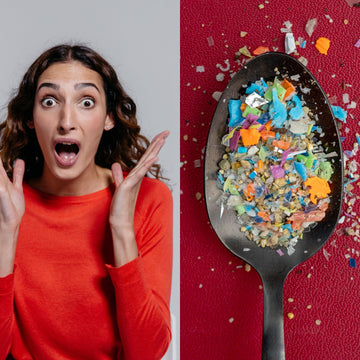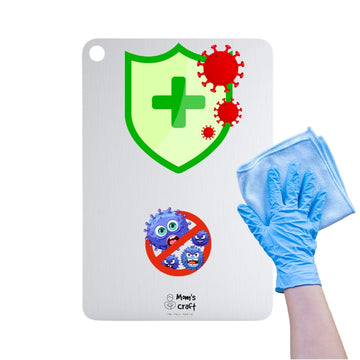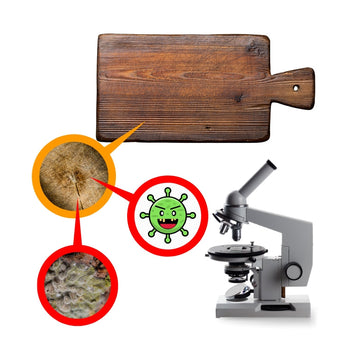Plastic chopping boards are a common sight in kitchens worldwide—they’re affordable, lightweight, and easy to clean. However, there’s a growing concern that many people aren’t aware of: microplastics. Over time, plastic chopping boards can shed tiny plastic particles, which can find their way into your food and the environment. Let’s explore why this is a problem and why stainless steel might be the safer choice.
What Are Microplastics?
Microplastics are tiny plastic particles less than 5mm in size, often invisible to the naked eye. These particles are produced as plastics break down from use and environmental exposure, such as in water, air, or soil. While microplastics are widely associated with oceans and wildlife, they can also pose risks in everyday activities like food prep.
In the case of plastic chopping boards, small plastic shavings can be released every time you cut or chop food, especially with harder knives or over time with wear and tear.
How Do Microplastics End Up in Your Food?
When using a plastic chopping board, especially one with deep cuts or scratches, the friction between the knife and board can cause microplastics to flake off. These particles can mix into your food, particularly when cutting items like vegetables or fruits that are in direct contact with the surface. Once ingested, microplastics may have long-term health impacts that are still being researched but are linked to hormone disruption and other health issues.
The Environmental Impact of Microplastics
Plastic is notorious for its environmental impact, but the problem goes beyond plastic waste. Microplastics are virtually impossible to remove from the environment once they’ve been released. Over time, these particles accumulate in the food chain, affecting not only marine life but also humans who consume contaminated food.
Plastic chopping boards are often discarded after they show signs of wear and tear, contributing to the growing plastic waste crisis. Unlike sustainable materials like stainless steel or wood, plastic boards don’t break down in an eco-friendly manner and continue to pollute the environment.
Why Stainless Steel Cutting Boards Are a Healthier Option
Switching to a stainless steel cutting board eliminates the risk of microplastic contamination. Here’s why it’s a healthier alternative:
-
Non-Porous Surface: Stainless steel is non-porous, meaning it doesn’t absorb food particles or bacteria, unlike plastic boards.
-
No Microplastics: Stainless steel doesn’t shed tiny plastic particles, so you won’t have to worry about ingesting microplastics when preparing food.
-
Durable and Eco-Friendly: Unlike plastic, stainless steel is long-lasting and recyclable, making it a much more eco-conscious choice.
-
Easy to Clean: Stainless steel can be cleaned with a simple wipe or in the dishwasher, making it a low-maintenance, hygienic surface for food prep.
Protect Your Health and the Planet
Switching to stainless steel is a win-win. Not only does it offer a cleaner, safer food prep surface, but it’s also more durable and better for the environment. At Moms Craft, we’ve designed stainless steel chopping boards that combine sleek aesthetics with top-notch hygiene and sustainability.
👉 Ready to Make the Switch?
Shop our stainless steel cutting boards now ➝
Say goodbye to microplastics, and hello to a cleaner, safer kitchen.



